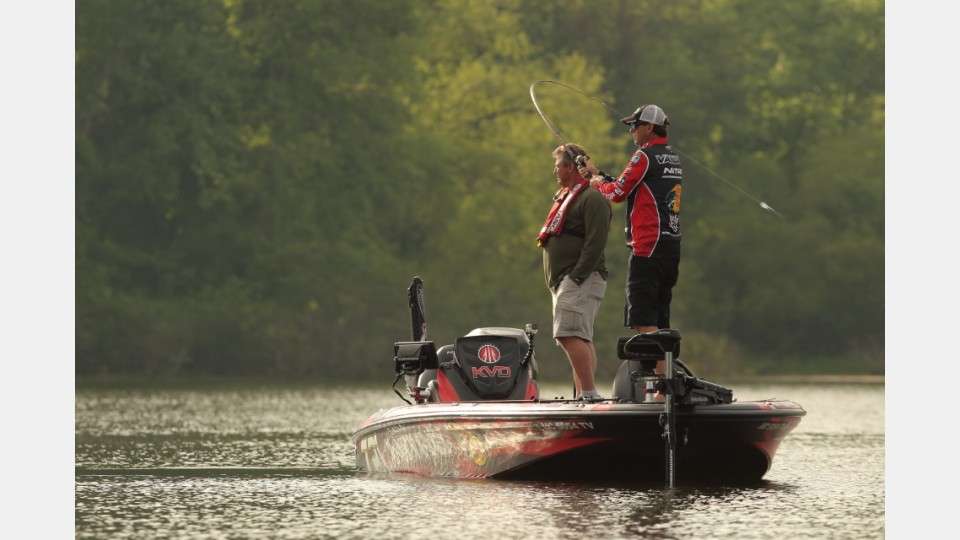
The shad spawn is kicking in across the south, including here at Wheeler Lake where the Academy Sports + Outdoors Bassmaster Elite event is underway. It’s a pretty cool phenomenon that every bass angler should be aware of.
Bass know when the shad are spawning and they gang up on them. Savvy anglers who find spawning shad locations can really log some good catches.
Shad spawn at night and especially around full moon periods.
They will continue spawning activity into the low light hours, but once the sun gets up, they move off the structure. That’s why it’s important for anglers to be on the water at first light. It can last a little longer on cloudy or windy days, but early morning periods are the best time to capitalize.
Shad spawn against objects, broadcasting their eggs against the cover. If it’s a grass lake, they will spawn around the grass. They’ll get up against bushes, docks, or even anchored boats. Rip rap or rocky shorelines can be dynamite. If there isn’t much shallow cover, they will spawn on clay banks and points.
There are a few ways to tell where it’s happening. For one, the blue herons will be perched along those areas gobbling up the massive schools of bait. Gulls and egrets will take advantage of them, too.
Another big sign is when you see shad popping out of the water near shore.
There are a number of ways to catch bass feeding on spawning shad, but the spinnerbait is my favorite. It’s also a good lure to help you find the baitfish, as the shad will literally follow your double willow blades back to the boat. If they’re thick, they will bang into the bait and even make the blades stop turning. I’ve caught bass on a spinnerbait that was being followed by shad and have both shad and the lure in the fish’s mouth!
Bass also will hit topwater poppers, buzzbaits and swimbaits worked through shad spawns, but if the water is stained, the spinnerbait should be your first choice.
Make accurate casts and track your lure tight to whatever object the shad is using. If it’s the bank, get close to the bank and parallel it.
Another thing I do is run my HydroWave on a shad pattern. Newer units also have blue herring patterns for those lakes that have herring. I like the frenzy or blitz pattern that replicates the sound of bass busting baitfish.
I’ve noticed that those underwater sounds coming from the unit will get the shad active when they aren’t out moving around. I’ve seen it many times on Guntersville, where the moment I turned on the HydroWave around grass beds, the shad would get excited and the bass turned on. If you can get shad riled up during the spawn, the bass will get active, too.
I get a lot of questions about how to use the HydroWave. In next week’s blog, I delve into the various sound patterns and how I use them.
It’s just a tool, but it can be a valuable tool when used in the right situation.
Remember, it’s all about the attitude!
Kevin VanDam’s column appears weekly on Bassmaster.com. You can also find him on Facebook, Twitter and Instagram.

